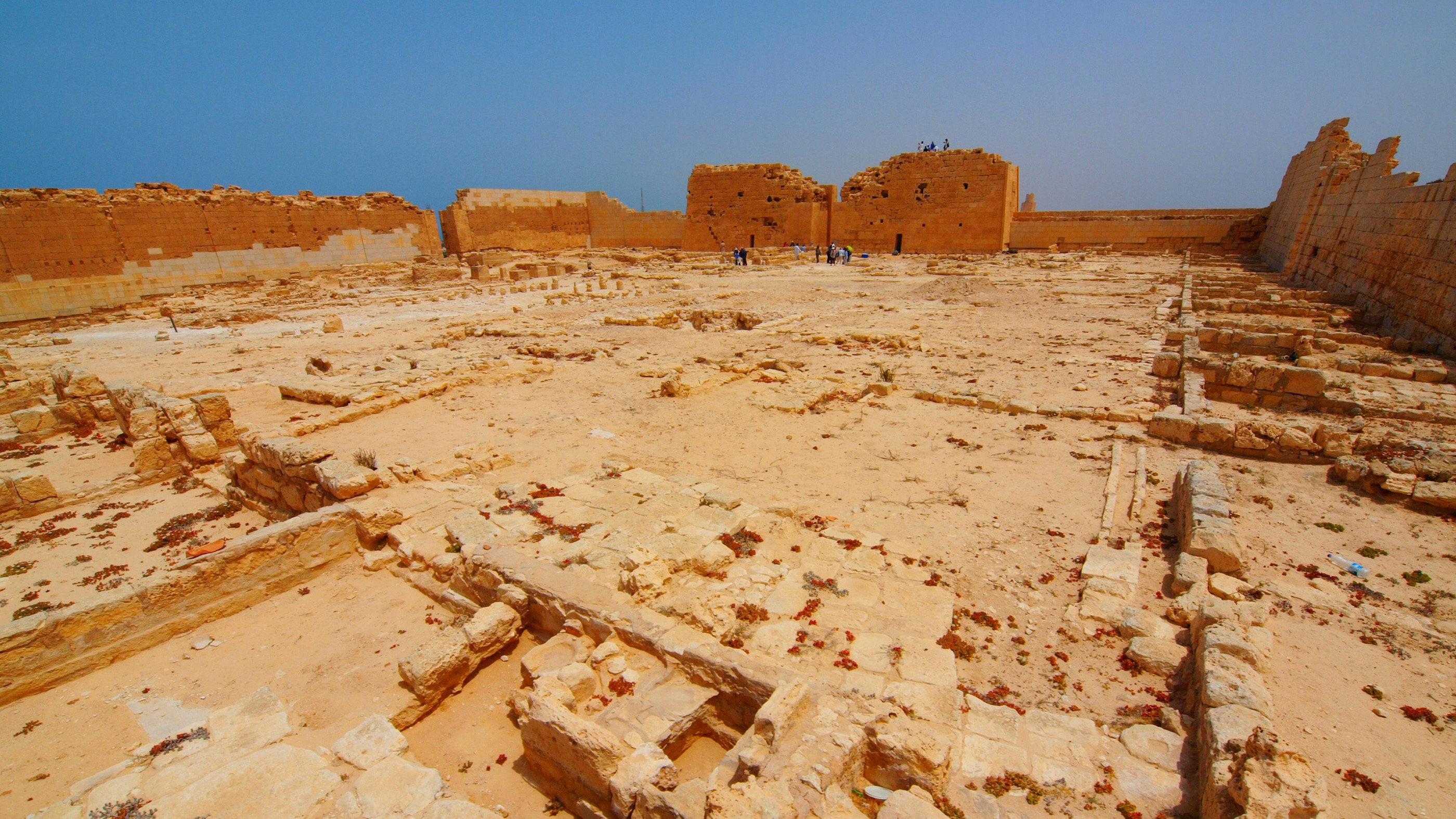Where is Cleopatra's tomb?

Lost for more than 2,000 years, the tomb of Cleopatra, the last queen of Egypt, has long been a source of intrigue for archaeologists and the public alike. And though media reports have suggested the discovery of a lifetime is near, the chances of finding Cleopatra's tomb are pretty low, experts say.
The lover of Julius Caesar and Marc Antony, who found herself on the losing end of a war, Cleopatra killed herself in 30 B.C., after being captured by Roman emperor Octavian. She did so by having a venomous snake called an asp bite her, according to ancient writers. She was buried with Antony in a mausoleum (a large tomb), ancient writers claimed.
Recent media reports have claimed that archaeologists are on the verge of discovering this tomb at a site called "Taposiris Magna," located about 31 miles (50 kilometers) west of Alexandria. For the past 15 years, a team led by Kathleen Martinez has been excavating the site, finding remains that date back to the time of Cleopatra, including a hoard of coins minted during her reign. Similar reports of an imminent tomb discovery also appeared in the news in 2019.
Related: The 6 most tragic love stories in history
But nearly a dozen scholars with expertise in Cleopatra told Live Science that it's unlikely that Cleopatra was buried at Taposiris Magna. They also generally agreed that the odds of finding her tomb are slim. Many of the scholars believe that Cleopatra would have been buried within Alexandria, possibly in an area that is now underwater.

"There is no evidence at all that Cleopatra's tomb could be in [Taposiris Magna]," Zahi Hawass, the former Egyptian minister of the State for Antiquities, told Live Science. Hawass said that he worked with Martinez for more than 10 years at the site and found no evidence that Cleopatra and Antony were buried there. "I believe now that Cleopatra was buried in her tomb that she built next to her palace and it is under the water," Hawass said. "Her tomb will never be found."
Over the past 2 millennia, coastal erosion has meant that parts of Alexandria, including a section that holds Cleopatra's palace, are now underwater. Even if the tomb is not underwater, there is a good chance that it was destroyed at some point in antiquity or that it is buried beneath modern-day development in Alexandria, scholars said. There is also a good chance that it was robbed in ancient times, a number of scholars added. At present no projects are searching for Cleopatra's tomb underwater although past projects have looked at Cleopatra's palace.
Sign up for the Live Science daily newsletter now
Get the world’s most fascinating discoveries delivered straight to your inbox.
"It would be remarkable if it could have survived the millennia of culture change and natural ruin," said Robert Gurval, an emeritus professor of Classics at UCLA, who has researched Cleopatra extensively. "Even if untouched by human hands, earthquakes and seawater would have buried or submerged it," Gurval said. "Her palace is certainly under water. Maybe her mausoleum, too."
Ptolemaic rulers
Cleopatra was the last of the "Ptolemies," a line of rulers descended from Ptolemy Soter, one of Alexander the Great's generals. Alexander, though he died at Babylon, was eventually reburied in Alexandria. Ancient writers often mention Alexander's tomb, but archaeologists have never found it or the tombs of any of the Ptolemaic rulers.
"The thing is, we don't know where Alexander himself or any of the 15 Ptolemaic rulers of Egypt were buried," said Susan Walker, an honorary curator and former Sackler Keeper of Antiquities at the University of Oxford's Ashmolean Museum. Walker suspects that Cleopatra's tomb would have been located close to other rulers from the Ptolemaic dynasty. If Cleopatra's tomb and those of the other Ptolemaic rulers were constructed in Alexandria, they would likely now be underwater or buried beneath modern-day development, Walker said.
Taposiris Magna
Martinez has suspected Cleopatra might be buried at Taposiris Magna because Cleopatra identified with the goddess Isis who "was both sister and wife of the god of the dead, Osiris," said Glenn Godenho, a senior lecturer in Egyptology at the University of Liverpool who hosted a recent documentary on Martinez's work.
Related: Bones with names: Long-dead bodies archaeologists have identified
"Building on work at the site by a Hungarian mission, Kathleen has confirmed the presence of a Ptolemaic period Isis temple within the larger Osiris temple that dominates the site," said Godenho. "Add to this a hoard of coins with Cleopatra's portrait on them, and other Greco-Roman period finds — not [the] least, fragments of statuary and mummies — and we can certainly say that Taposiris Magna was active during Cleopatra's reign," said Godenho.
But after more than 10 years of work at Taposiris Magna, archaeologists have not found Cleopatra's tomb and most of the scholars that Live Science talked to are skeptical that it is there. "Kathleen's missions over the years have been concerned with the Osiris temple itself, and the belief that Cleopatra's tomb will be discovered within its walls, near to her goddess. So far this has drawn a blank" in terms of trying to find Cleopatra's tomb, said Godenho.
Another problem is that the burials at Taposiris Magna seem to be of religious figures rather than royalty. "My understanding is that the mummies found there are more likely to be high-status priests than members of the royal family," said Walker. Additionally many of the scholars that Live Science talked to noted that historical texts indicate that Cleopatra's mausoleum is located within Alexandria whereas Taposiris Magna is located 31 miles from the city.
Recently, Martinez's team has been excavating a necropolis located at Taposiris Magna. "It's quite normal for Egyptians to want to be buried near their influential leaders, and Kathleen [Martinez] has made some remarkable discoveries in the vicinity that feature in the film [documentary], including a once gold-leaf covered mummy. This definitely makes for [interesting] TV, but suggesting that people at this site are crowding around [Cleopatra's tomb] specifically is a tough argument to make," Godenho said, referring to other Egyptian burials "crowding around" her tomb.
While evidence is slim that Cleopatra was buried at Taposiris Magna, that doesn't take away from the importance of the site.
"It's worth pointing out that there is much to this place besides Cleopatra though — archaeological work here is set to help us understand more about its role in trade between Mediterranean and African worlds, religious activity and afterlife beliefs, social structures and population. … There's also the question of how far back in time use of this place goes. Cleo's just one thread of business, and we shouldn't take our eye off the bigger picture," Godenho said.
Live Science was unable to get in contact with Martinez at time of publication.
Originally published on Live Science.

Owen Jarus is a regular contributor to Live Science who writes about archaeology and humans' past. He has also written for The Independent (UK), The Canadian Press (CP) and The Associated Press (AP), among others. Owen has a bachelor of arts degree from the University of Toronto and a journalism degree from Ryerson University.










